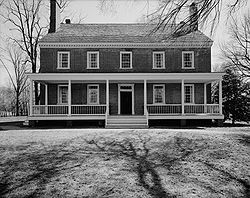Deciding to Rent or Buy Your House: A Tale of Two Cities
 People often decide between renting or buying a place to live based on preferences and instinct: What do you want to do?
People often decide between renting or buying a place to live based on preferences and instinct: What do you want to do?
If they are incrementally more analytical, they may explore “how much house” they can “afford”. This approach is grounded in capabilities. What can you do?
I think the most useful approach to important financial planning decisions like buying vs. renting your home is one grounded in optimization: What should you do?
Owning a house has costs – lots of them. These include mortgage payments of principal and interest, property taxes, and homeowners’ insurance. While you own a house, you have to maintain it, and when you sell it, you’ll pay real estate commissions.
Owning a house also has benefits, including the rent you don’t pay, and the “forced savings” feature of paying down principal on your mortgage over time.
I created a model to compare renting and buying.
The model has several variables. Some of these are Facts, and easy to plug in based on your particular situation.
- GROSS: your pre-tax gross income.
- RATE: your mortgage rate. These seem to currently be a bit under 4% for borrowers with good credit ratings, but of course they’ll rise and fall over time. (Note that the model assumes a 30-year fixed-rate mortgage.)
- MILLAGE: the property tax rate, expressed as a percentage of the home’s value. (This is easy to back out for any prospective purchase using Zillow.)
- INSURANCE: your annual homeowners’ insurance cost, expressed as a percentage of the home’s value.
Some of the model’s variables are Forecasts – but ones that aren’t too difficult to make.
- TIME: the length of time you own the house before moving.
- MAINT: estimated maintenance costs for the property. Many experts range these between 1% and 4% of the purchase price each year, depending on a property’s age and condition.
- MONTHS-RENT-HOUSE-COST: this is the home’s price, divided by its estimated monthly rent. This value is difficult to estimate with precision, but by spending time on Zillow in your target neighborhood, you can develop a reasonable working estimate.
To explore how these variables contribute to model results, let’s consider a case study of two sisters from Louisville, Laura and Patty. Laura’s a young attorney, married to a financial analyst, Henry, and they have settled in Laura’s hometown. Patty is a dentist, married to an urban planner, Charlie, and they live in Portland.
Laura and Patty can each make a 20% down payment, and because they’re prudent, they keep their total principal, interest, taxes, and insurance within 28% of their respective gross incomes.
In Louisville, property taxes are relatively low (MILLAGE = 1.1%), but so too are salaries (GROSS = $180,000).
Rental rates are high in Louisville compared to home prices (MONTHS-RENT-HOUSE-COST = 155). (Another way of thinking about this is that the “earnings yield” in imputed rent of owner-occupied housing in Louisville is rather high, or that the P/E ratio of Louisville housing is low – a sign of a housing market that’s relatively less “frothy” than others….)
In Portland, salaries are a little higher (GROSS = $240,000), but so too are property taxes (MILLAGE = 2.4%). Rental rates in Portland are much lower compared to home prices than they are in Louisville (MONTHS-RENT-HOUSE-COST = 280).
Stated differently, Portland’s housing market has a P/E ratio of 23, while Louisville’s has a P/E ratio of 13.
The model suggests that Laura and Henry can buy up to $824,000 of house in Louisville and stay within their 28% PITI target. (Whether they’d want that much house is an open question, but perhaps one best discussed at cocktail parties, rather than here.)
In comparison, Patty and Charlie can buy up to $906,000 of house in Portland and stay within their 28% PITI target.
Very well – so far, we’ve determined capabilities: “how much house” Laura and Patty can buy. But what should they do? Rent, or buy?
In Louisville, buying is rather compelling. The model suggests that in Louisville, if Laura and Henry own the house for as few as two years, owning will cost them somewhat less than renting.
The case for buying in Portland appears weaker, because the model shows that even over very long holding periods (for instance, 20 years), owning still costs much more than renting.
After 30 years of ownership, Patty and Charlie’s house will have to have appreciated in real terms (i.e., above and beyond the inflation rate) by over $450,000 (or 1.4% per year) for ownership to break even with renting. (For a state-by-state look at housing price appreciation gross of inflation, go here.)
Real estate markets are localized and far less efficient than securities markets, so the model is directional only, and should be used with caution. That said, it has certain features that generalize:
- If your expected time to own the house is shorter, owning is less attractive
- Higher maintenance costs make owning less attractive
- Higher property tax rates make owning less attractive
- Higher interest rates make owning less attractive
- A higher ratio of the house’s cost to its monthly rent makes owning less attractive
The model also helps you focus on why buying a house makes sense, if it does make sense.
Louisville is an example of a market where the case for buying is about cash flow: the month-by-month higher expense of renting cancels out other costs of ownership pretty quickly, making ownership likely the better choice in many circumstances.
In comparison, the case for buying in Portland is about price appreciation: the month-to-month savings of renting may be canceled out by long-term gains in home equity.
The real estate crash of 2007 through 2009 upset many old assumptions that real estate tended to be a safe investment, and it illustrates the importance of making a thoughtful case-by-case analysis on the question of renting or buying.
Anchor your analysis in your own local setting, including your local salary, local property taxes, and local ratios between home prices and rents. Then think carefully about whether or not job events or life circumstances might cause you to need to move, and if so, how soon.
When your analysis is personalized and localized, you’ll be much more likely to make the right rent-vs.-buy decision.
I am grateful to Shaw Solomon of Rainey, Jones & Shaw Realtors for providing perspective on relocation costs and break-even times for home ownership, and to Kent Gregory of Sterling Thompson for providing information on comparative costs of homeowners’ and renters’ insurance.
